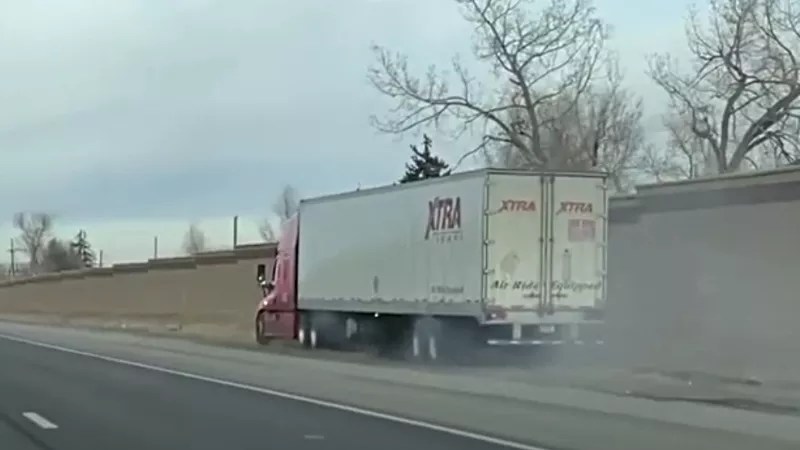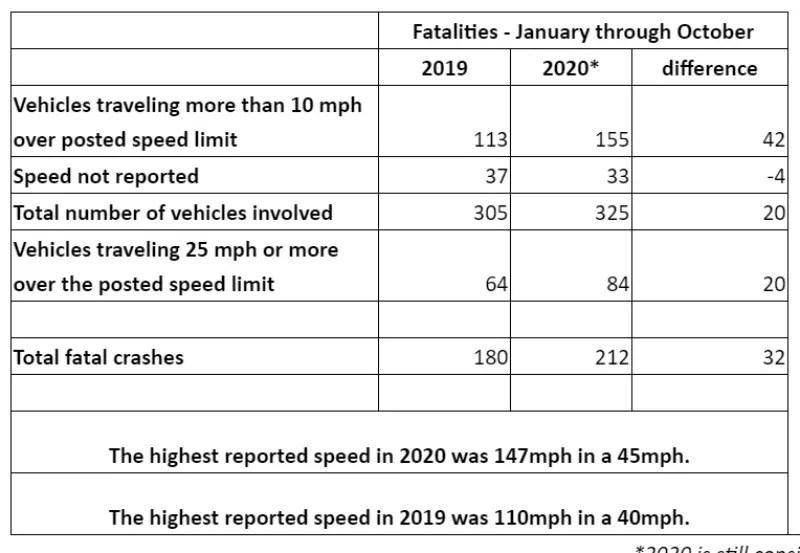
9News via YouTube

Audio By Carbonatix
If you’ve driven on Interstate 70 during the morning rush lately, whether on a clear day or one with icy winter conditions (like today), you’ve probably experienced some harrowing moments, and no wonder. With highway volume down, owing to the number of people still working from home during the pandemic, speeds have gone way up, with motorists emboldened to zoom along at whatever pace they’d like, Autobahn-style.
Such scenarios leave drivers who’d prefer to follow the posted speed limit feeling screwed. If they remain in the right-hand lane, they’re frequently stuck behind slow-moving semi-trucks. But if they try to move around them, they enter a veritable race track on which oversized pickups, giant SUVS and other weighty hunks of metal are hurtling forward as if shot from a cannon – and the way many of them practically crawl up your rear exhaust pipe before zooming past can be flat-out terrifying.
The consequences of increased speeds on highways in the Denver area and beyond are real and quantifiable. According to statistics provided by Sam Cole, spokesperson for the Colorado Department of Transportation, “vehicle traffic volume was down 11 percent in 2020,” yet based on still-preliminary figures, “there was a slight increase in the number of fatalities.”
Moreover, many of these tragedies can be directly attributable to excessive speed.
Will you step up to support Westword this year?
At Westword, we’re small and scrappy — and we make the most of every dollar from our supporters. Right now, we’re $20,000 away from reaching our December 31 goal of $50,000. If you’ve ever learned something new, stayed informed, or felt more connected because of Westword, now’s the time to give back.
The factors that led to the current situation began to rise shortly after Colorado Governor Jared Polis issued a statewide stay-at-home order on March 25, 2020. The amount of traffic on the roadways promptly plummeted while speeds went in the opposite direction.
“We have seen too many drivers that feel a more open road is an invitation to violate speed and other laws,” Colorado State Patrol Trooper Josh Lewis told us for an April post about how COVID-19 had changed travel in Colorado. “But despite the stay-at-home order and other aspects that have resulted in less vehicles on the roadways, CSP has issued more citations for 20+ MPH over the speed limit, and 40+ MPH over the speed limit, than we did for the same time period last year (Jan-Feb-March).”
The latest CDOT data, updated through October 2020, shows that this trend continued even after the stay-at-home order was lifted, and the result was often deadly:

Note: The data for 2020 has an asterisk because it’s considered preliminary and subject to change.
This is not what CDOT envisioned when it released its 2020-2023 Colorado Strategic Transportation Safety Plan last April. That document set what is described as “a performance target of reducing fatalities by 15 percent for the 2020 to 2023 time frame.”
At first blush, fewer cars on the road would seem to translate to a decrease in driving deaths. But it hasn’t worked out that way so far, in part because of behavior that can be seen on I-70 right now.
Click to read the 2020-2023 Colorado Strategic Transportation Safety Plan.